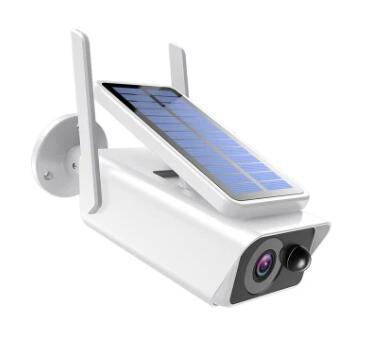Eyes on the Move: How Surveillance Enhances Safety and Security in the Transportation Industry
2024-05-25
In an increasingly connected and fast-paced world, the transportation industry is the backbone of global commerce and daily life. Ensuring the safety and security of passengers, cargo, and infrastructure is paramount. Surveillance technologies play a crucial role in achieving these goals, providing real-time monitoring, deterrence, and response capabilities. This blog explores how surveillance is used in the transportation industry to enhance safety and security, highlighting key applications and benefits.
The Role of Surveillance in Transportation
Surveillance in the transportation sector encompasses a range of technologies, including CCTV cameras, GPS tracking, biometric systems, and advanced analytics. These tools are deployed across various modes of transportation—aviation, railways, maritime, and roadways—to monitor activities, detect anomalies, and respond to incidents promptly.
Enhancing Passenger Safety
Public Transit Systems
In public transit systems like buses, trains, and subways, surveillance is vital for ensuring passenger safety. CCTV cameras are strategically placed in stations, vehicles, and terminals to monitor for criminal activities such as theft, vandalism, and assaults. Real-time monitoring allows for quick intervention by security personnel, helping to prevent incidents or mitigate their impact.
Airports
Airports are critical nodes in the transportation network, where surveillance is integral to maintaining security. Advanced surveillance systems, including high-definition cameras and facial recognition technology, help identify potential threats and ensure compliance with security protocols. These systems can track suspicious behavior, monitor restricted areas, and assist in crowd management, enhancing both safety and operational efficiency.
Securing Infrastructure
Railways
Railway infrastructure, including tracks, stations, and bridges, requires continuous monitoring to detect and address safety hazards. Surveillance systems equipped with sensors can detect unusual vibrations, temperature changes, or structural anomalies, alerting maintenance teams to potential issues before they escalate. This proactive approach helps prevent accidents and ensures the reliability of rail services.
Highways and Roads
On highways and major roads, surveillance plays a crucial role in traffic management and accident prevention. Traffic cameras and automated systems monitor vehicle flow, detect violations, and manage incidents like accidents or road obstructions. By providing real-time data to traffic control centers, these systems help optimize traffic flow, reduce congestion, and enhance overall road safety.
Protecting Cargo and Assets
Freight and Logistics
In the freight and logistics sector, surveillance ensures the security of goods during transportation. GPS tracking systems provide real-time location data for trucks and shipping containers, allowing companies to monitor the movement of cargo and detect any deviations from planned routes. This helps prevent theft, ensure timely deliveries, and optimize logistics operations.
Ports and Maritime Security
Ports are critical hubs for international trade, requiring robust security measures to protect against threats such as smuggling, piracy, and terrorism. Surveillance systems in ports include a combination of CCTV, radar, and sonar technologies to monitor vessel movements, secure perimeter areas, and inspect cargo. Advanced analytics can detect suspicious activities and trigger alerts for immediate action.
Emergency Response and Incident Management
Integrated Surveillance Systems
Integrated surveillance systems combine data from multiple sources, providing a comprehensive view of transportation networks. This integration enhances situational awareness and enables coordinated responses to emergencies. For example, in the event of a train derailment, an integrated system can quickly relay information to emergency responders, dispatching assistance and minimizing the impact on passengers and services.
Real-Time Monitoring and Analytics
The use of real-time monitoring and analytics in surveillance allows for rapid detection and response to incidents. Advanced algorithms can analyze video feeds to identify unusual patterns, such as unattended bags in airports or erratic driving behavior on highways. By automating the detection process, these systems improve response times and reduce the burden on human operators.
Privacy and Ethical Considerations
While surveillance is essential for safety and security, it is crucial to balance these benefits with privacy and ethical considerations. Implementing robust data protection measures, ensuring transparency in surveillance practices, and establishing clear guidelines for data use are vital steps in maintaining public trust. Engaging with communities and stakeholders can help address concerns and foster a cooperative approach to surveillance in transportation.
Conclusion
Surveillance technologies have become indispensable in the transportation industry, enhancing safety and security across various modes of travel. From public transit systems and airports to highways and freight logistics, these technologies provide critical insights and real-time monitoring capabilities. By integrating advanced surveillance solutions with ethical considerations, the transportation industry can continue to safeguard passengers, cargo, and infrastructure, ensuring a secure and efficient journey for all.



